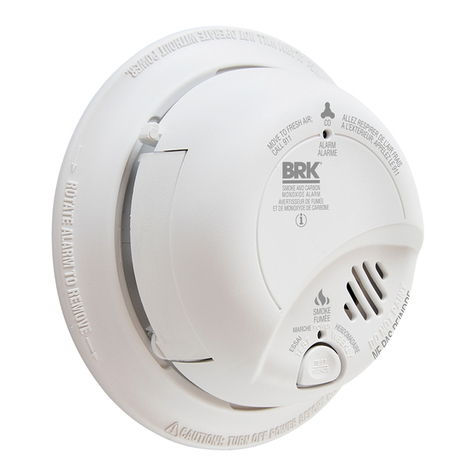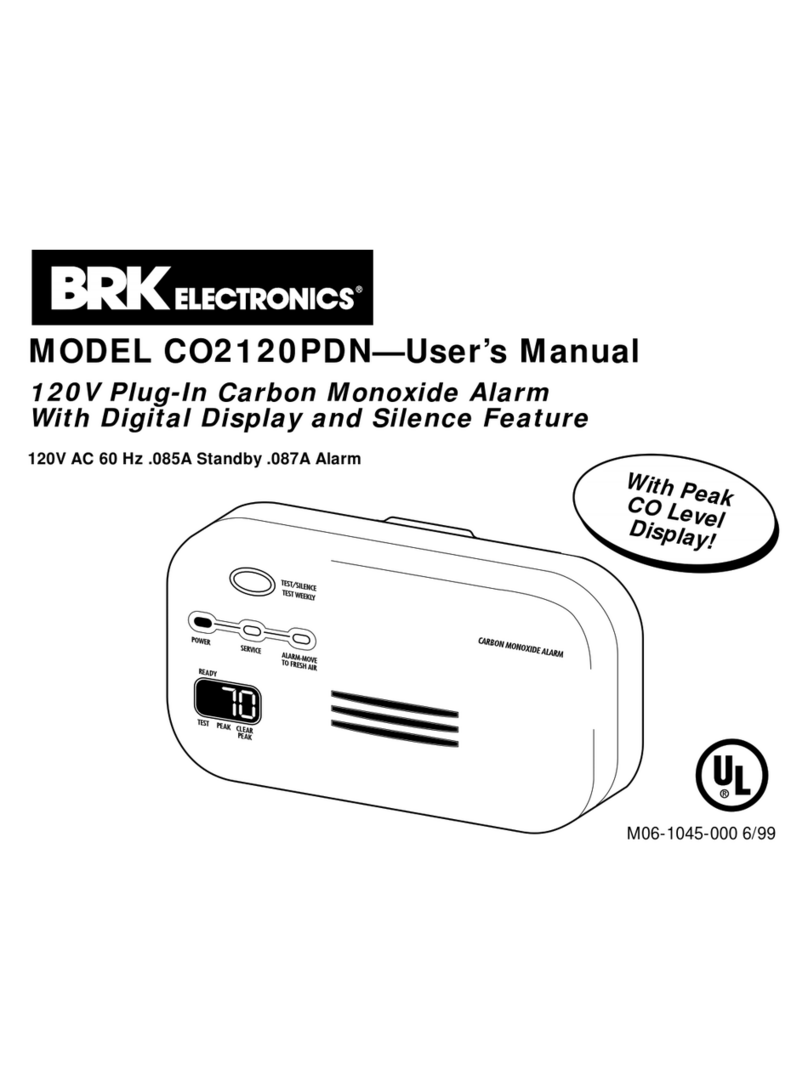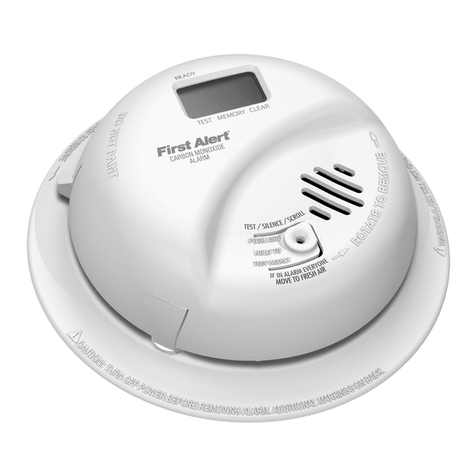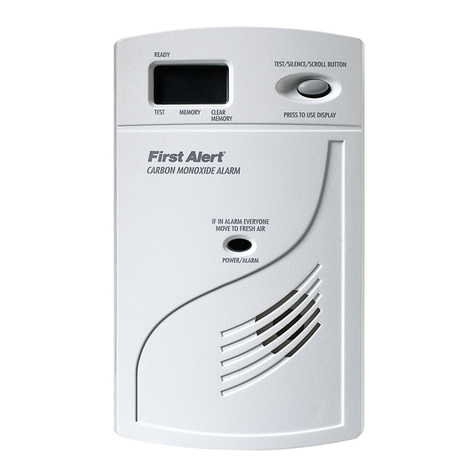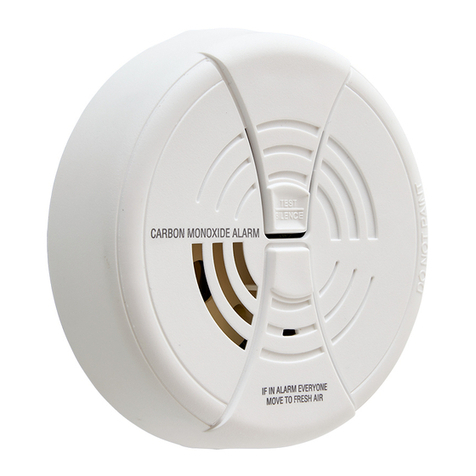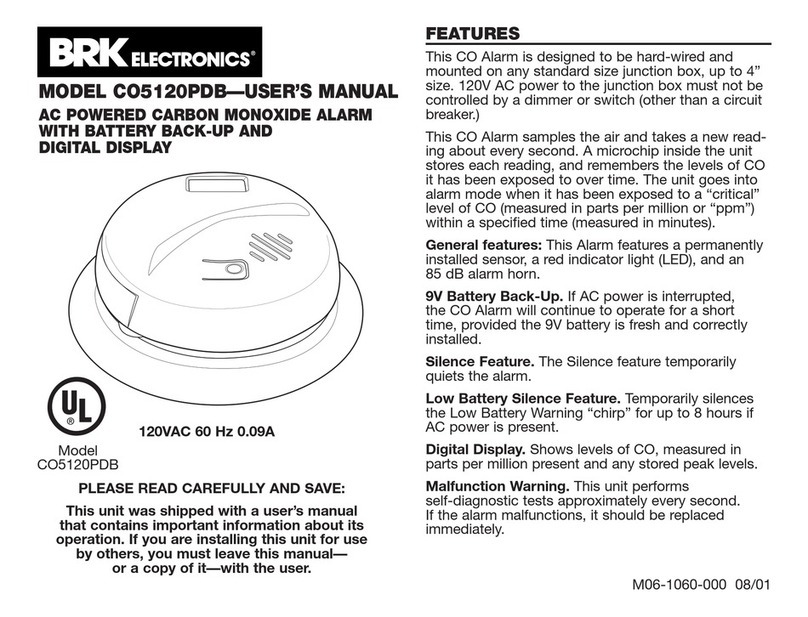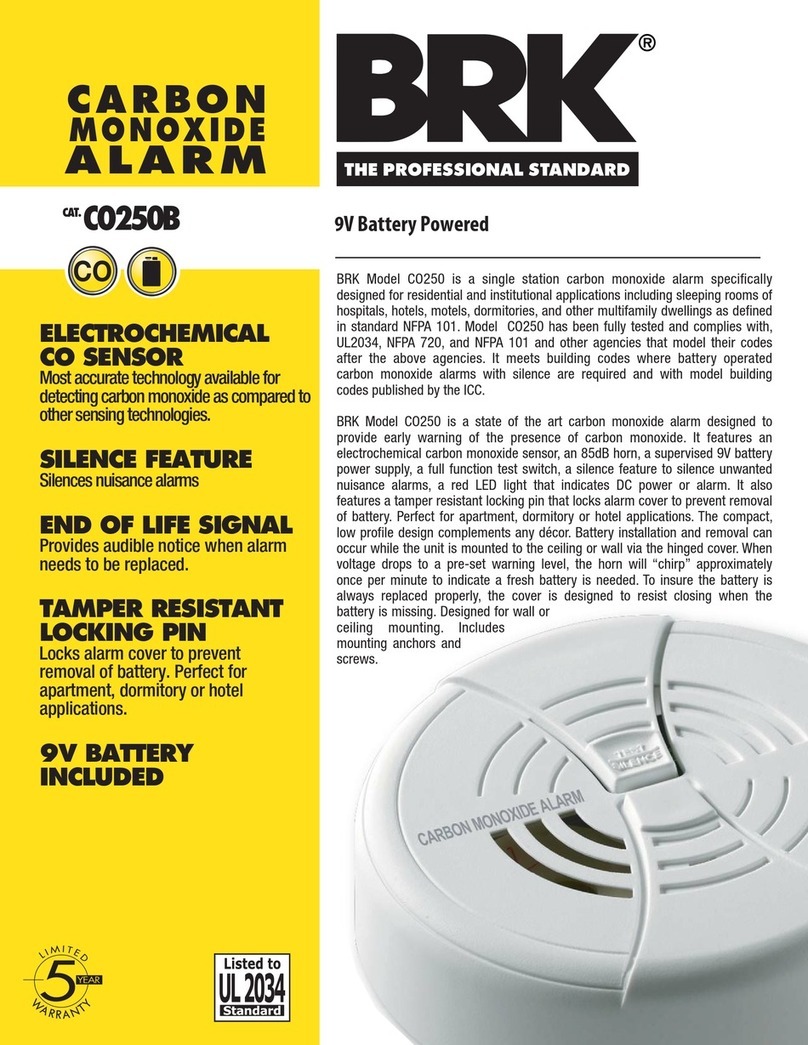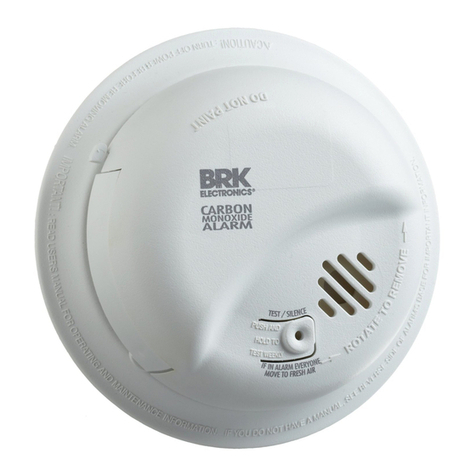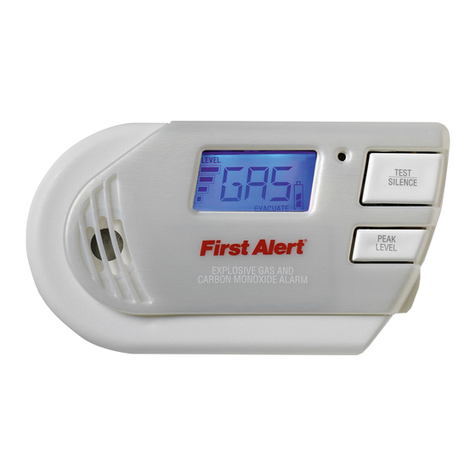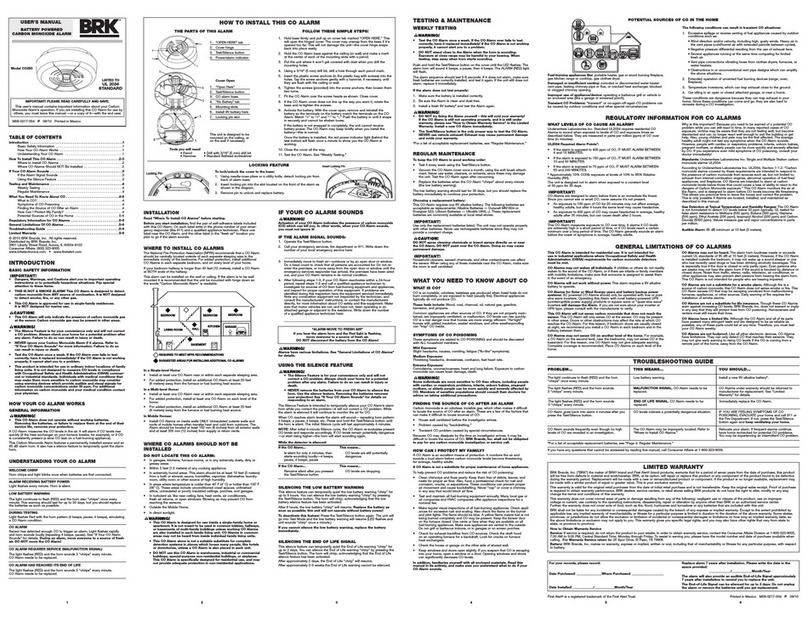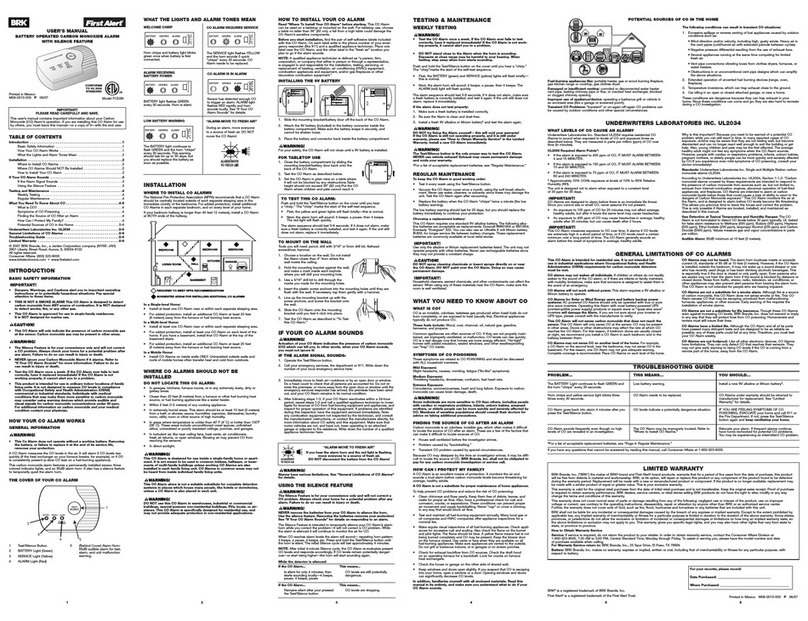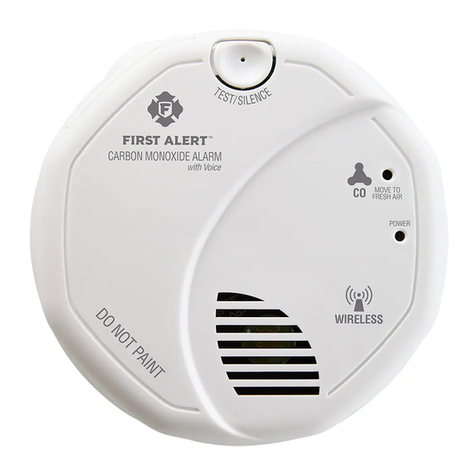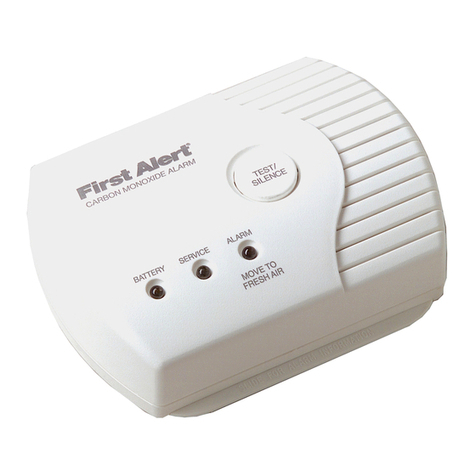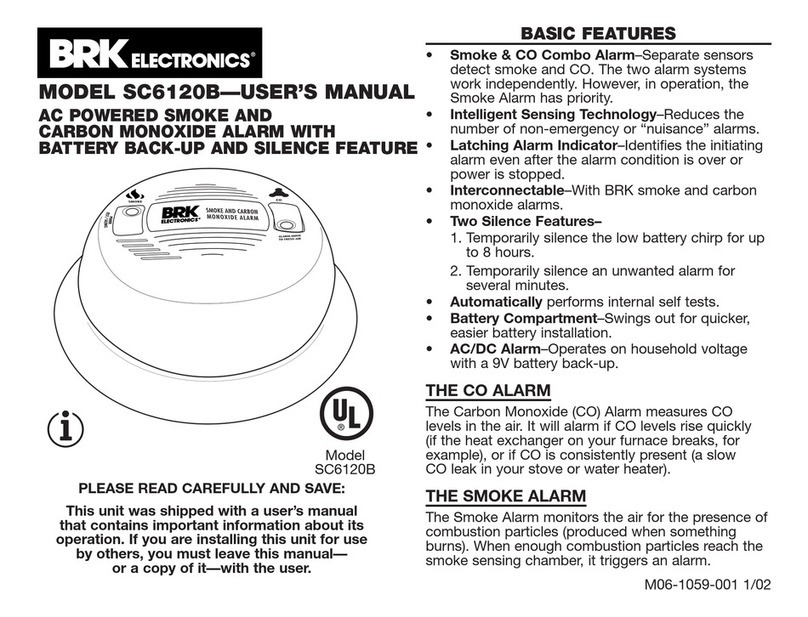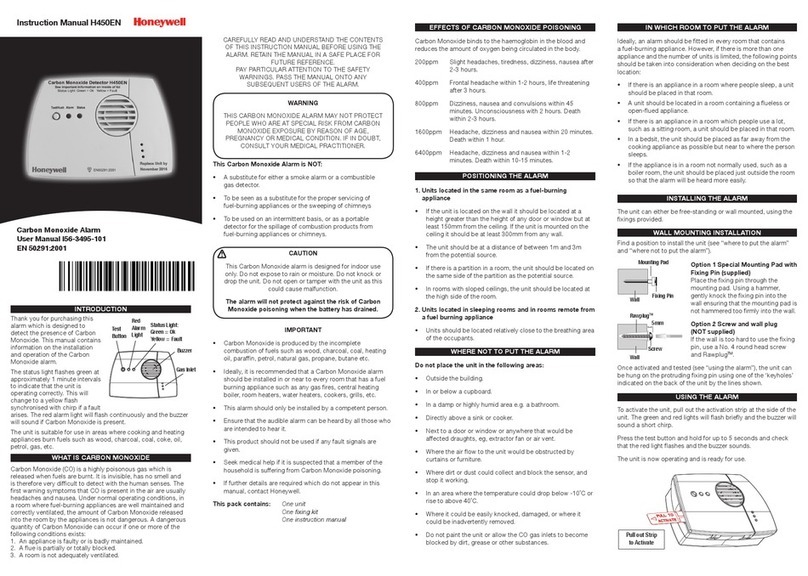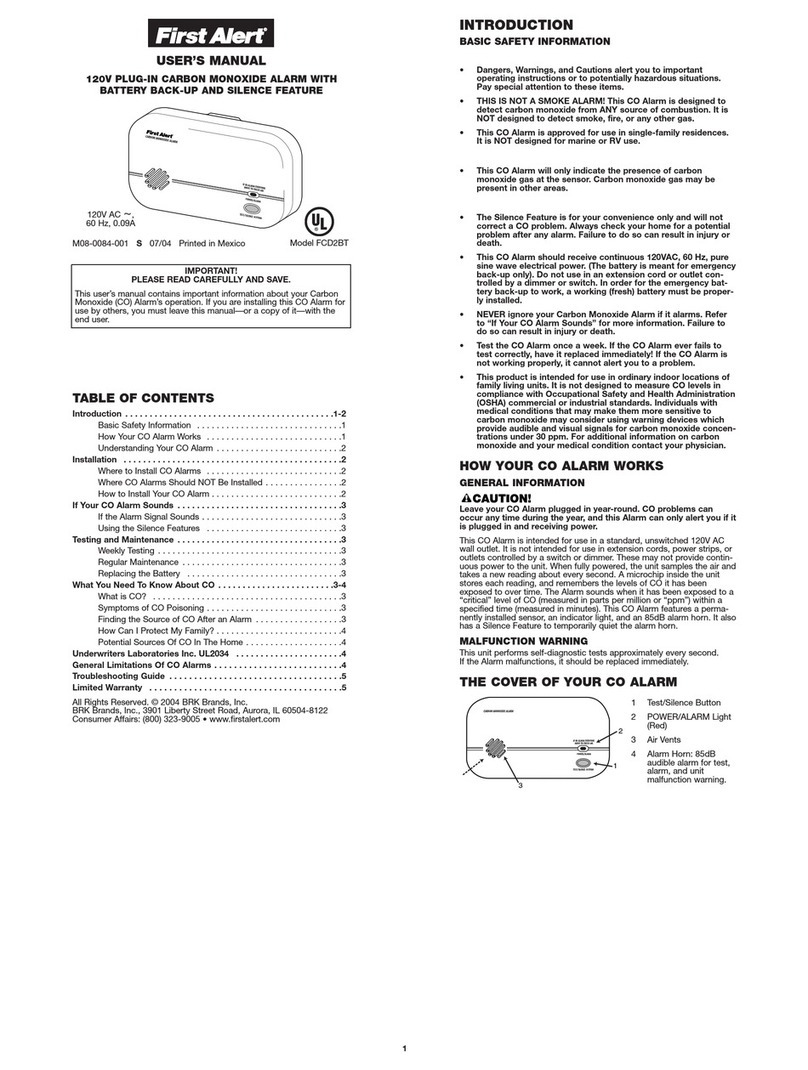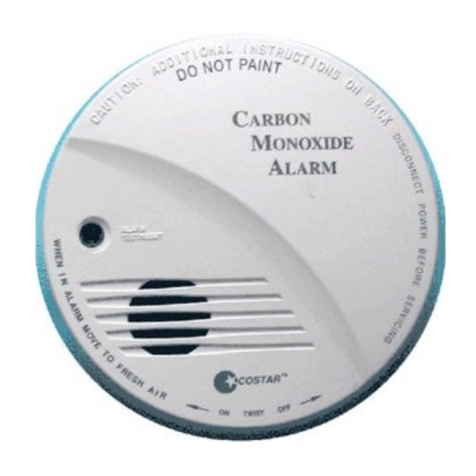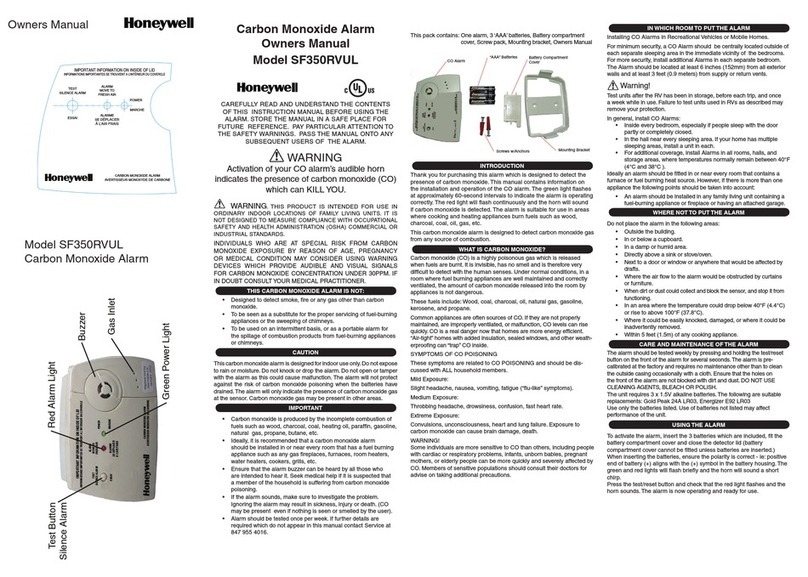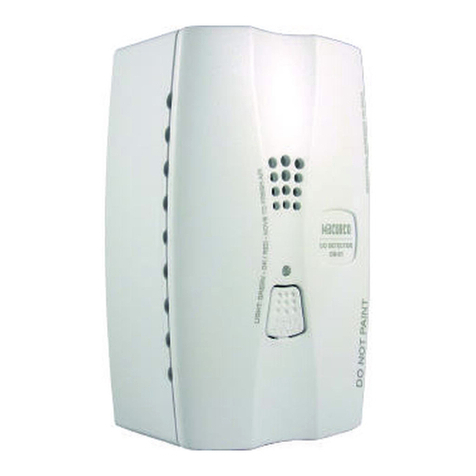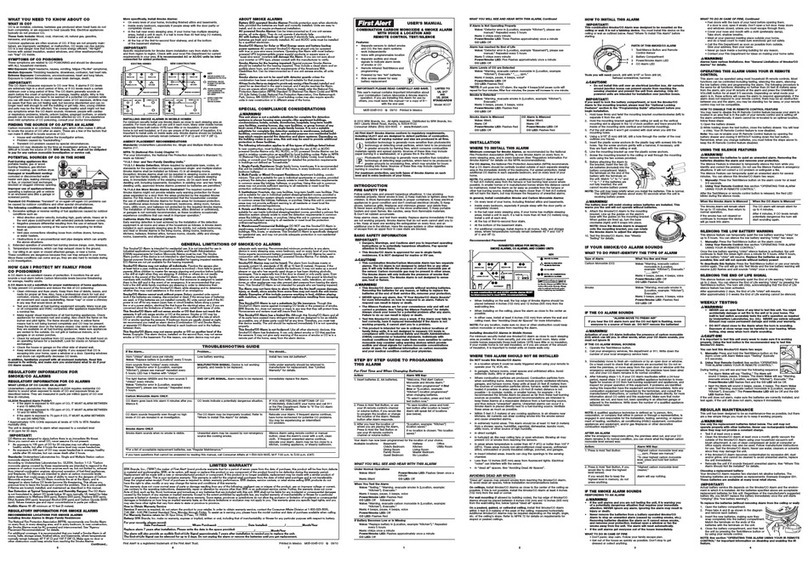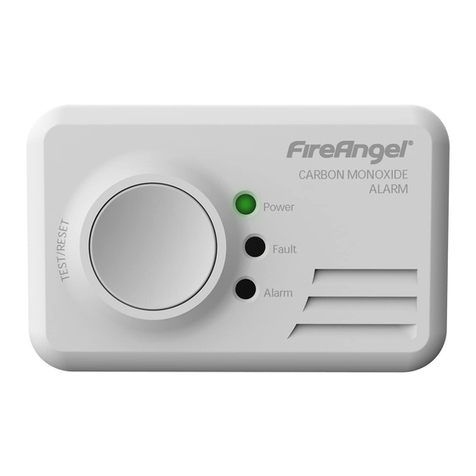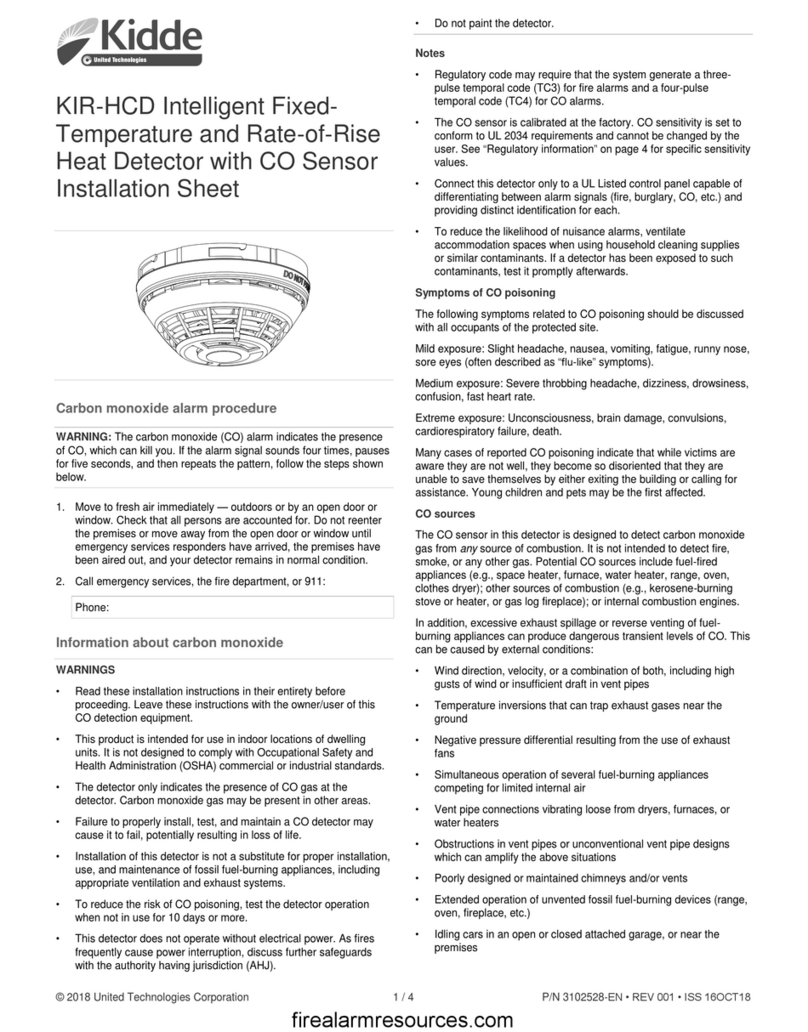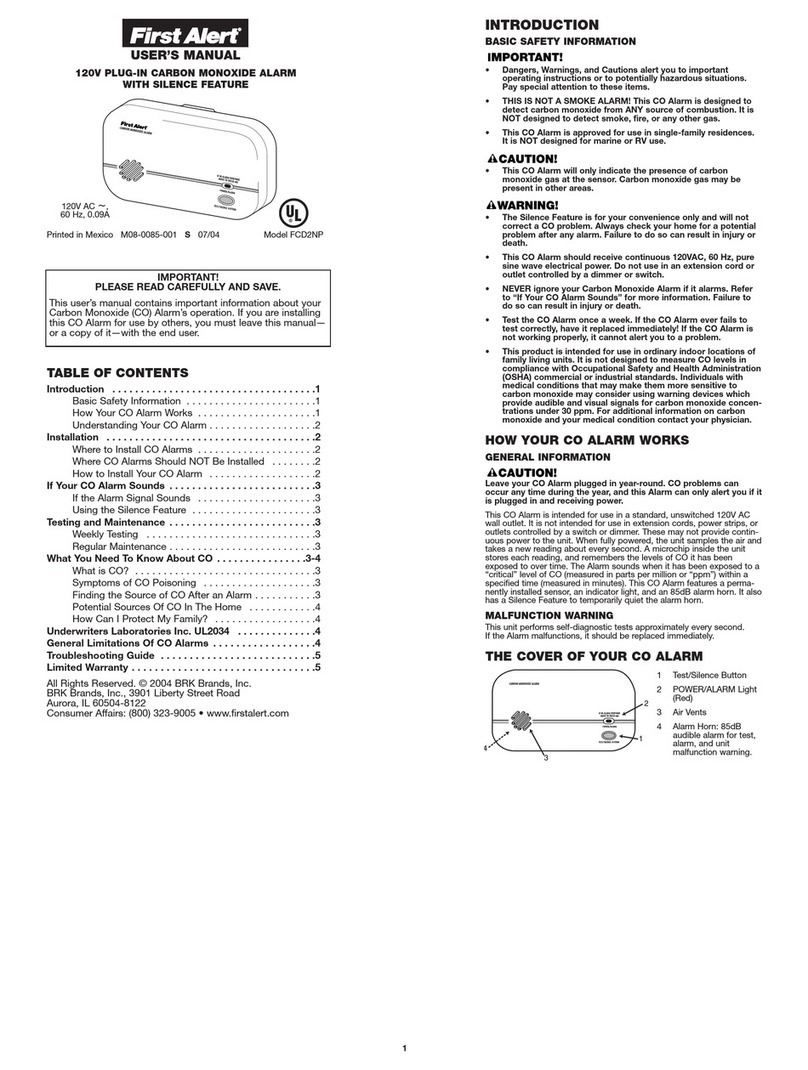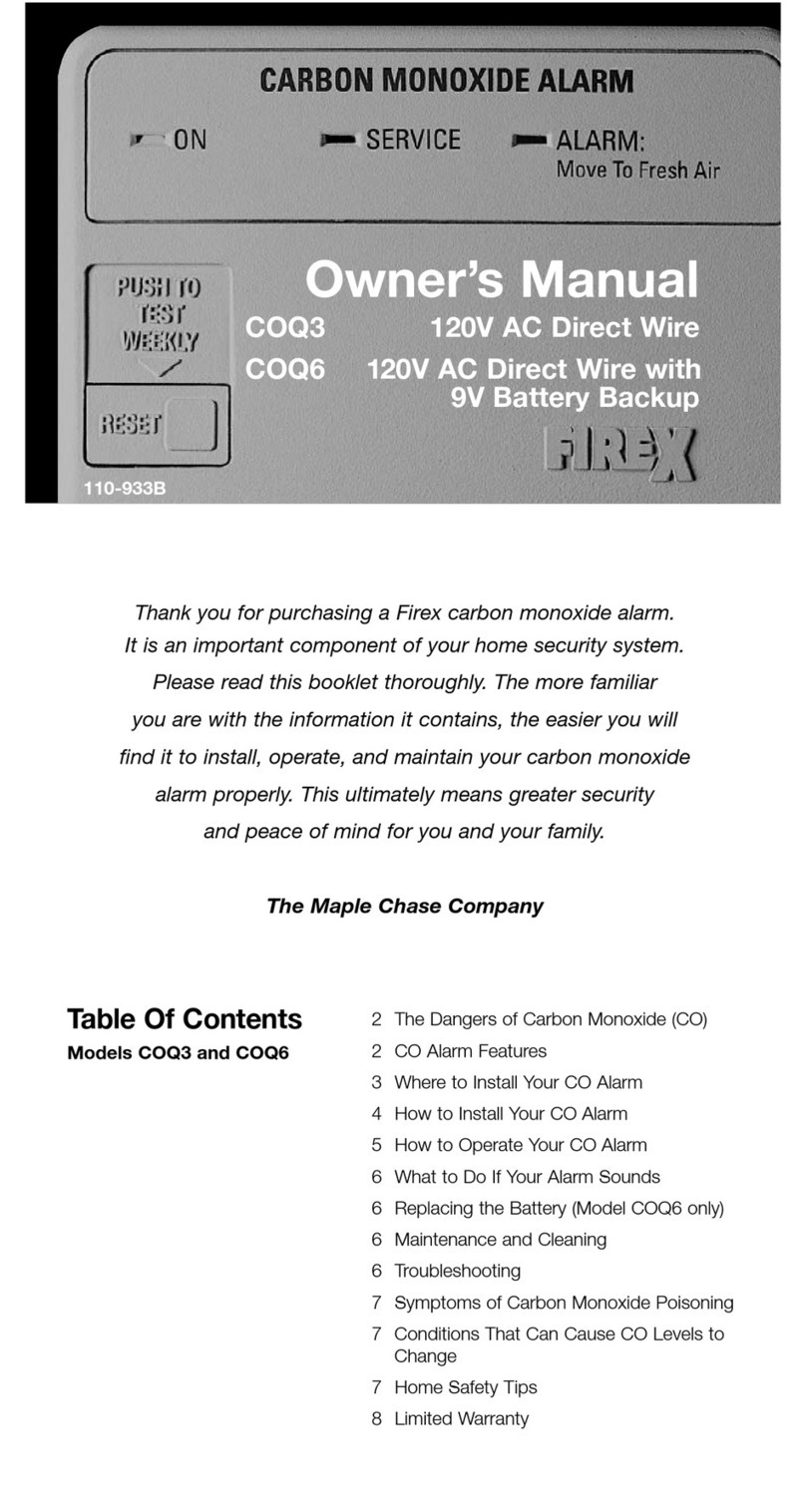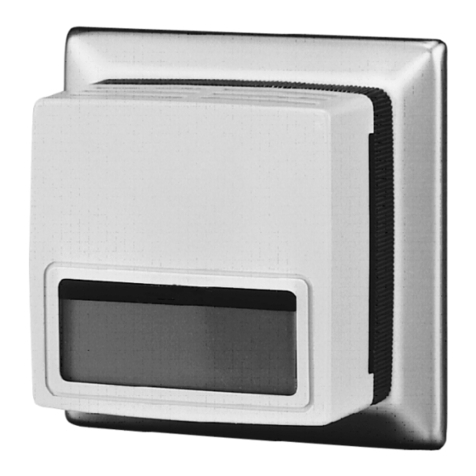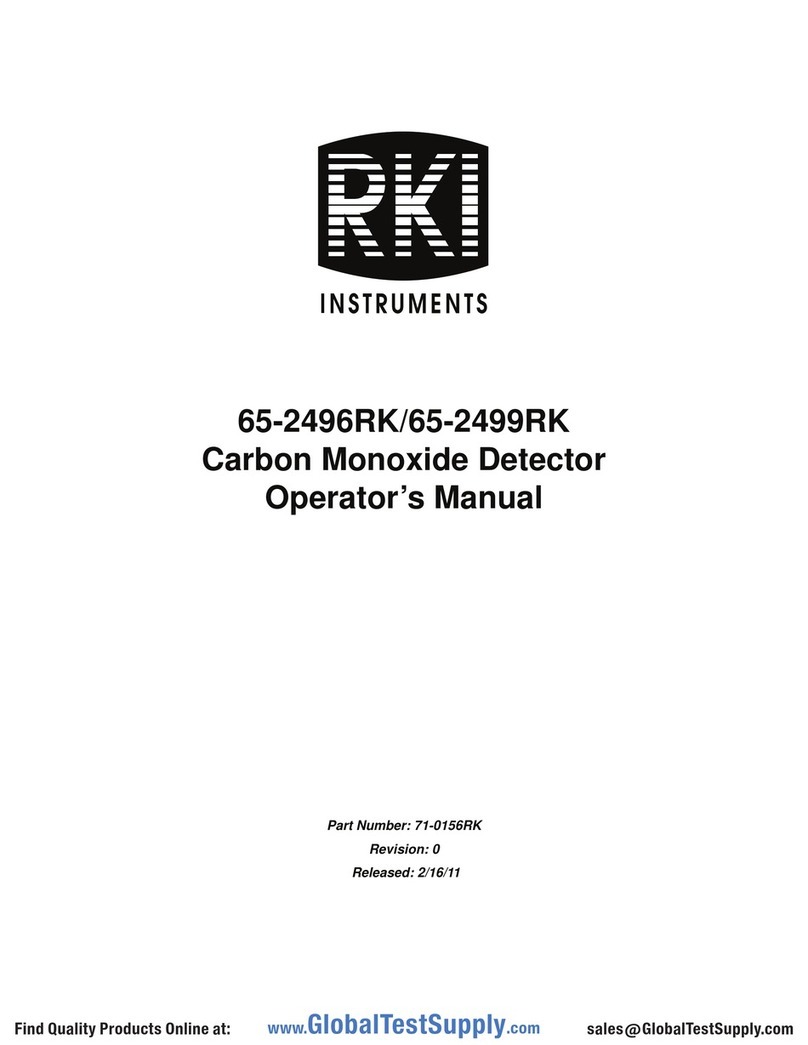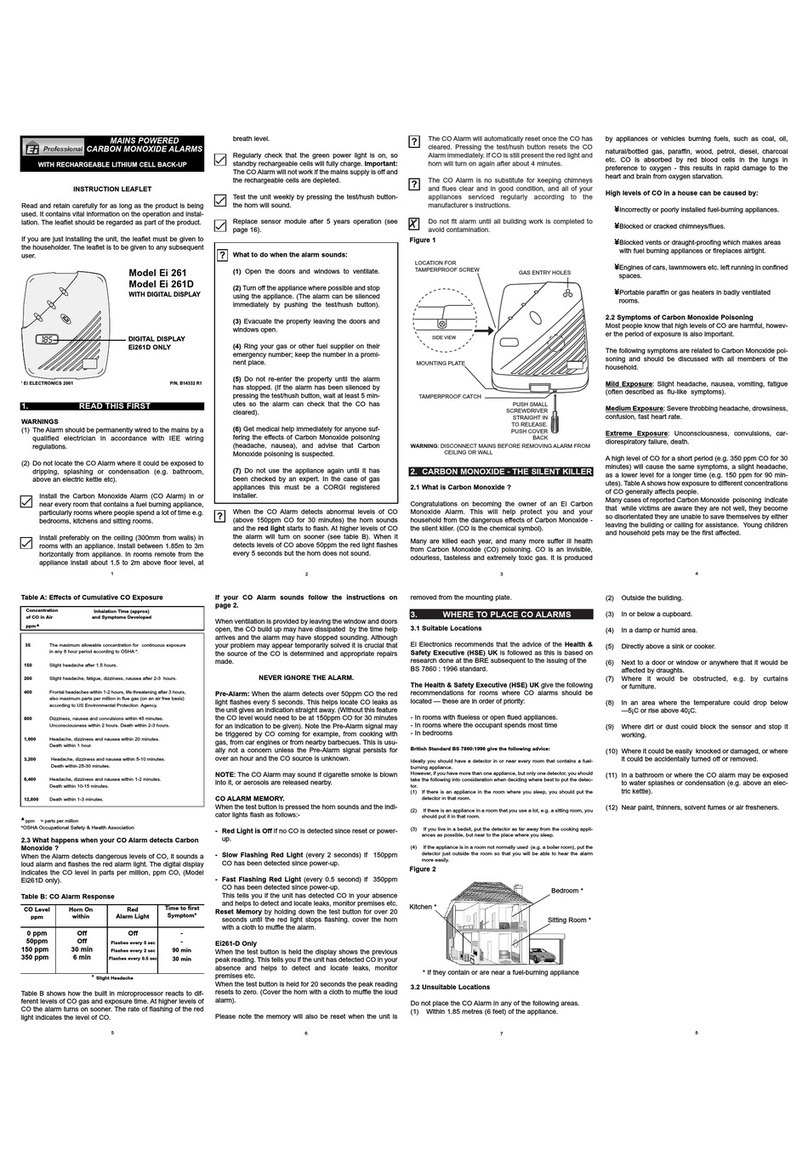
5
CO ALARM SPECIFICATIONS
Gas Detection at Typical Temperature and
Humidity Ranges:
The CO alarm is not
formulated to detect CO levels below 30 ppm
typically. UL tested for false alarm resistance to
Methane (500 ppm), Butane (300 ppm), Heptane
(500 ppm), Ethyl Acetate (200 ppm), Isopropyl
Alcohol (200 ppm) and Carbon Dioxide (5000
ppm). Values measure gas and vapor
concentrations in parts per million.
Required Alarm Levels:
Before 10% COHb
exposure at levels of 30% to 70% Relative
Humidity (RH):
• 400 ppm CO between 4 and 15 minutes
• 150 ppm CO between 10 and 50 minutes
• 70 ppm CO between 60 and 240 minutes
When exposed to a constant level of 30 ppm of
CO, this CO alarm was tested not to go into
alarm for at least for 30 days.
Audible Alarm:
85dB minimum at 10 feet.
Power:
Powered by 120VAC. The 9V battery
back-up provides 8 hours of standby and sounds
alarm for 12 hours with fresh battery. When AC
power is on, red light (LED) shines continuously.
Under battery power, red light flashes once a
minute.
Malfunction:
Horn chirps and light blinks 3 times
(in rapid succession) every minute.
Dimensions:
5.4” diameter (approx.)
Supply Voltage:
120VAC 60Hz .085A
Standby .087A Alarm
During Alarm:
Repeating alarm horn pattern:
4 beeps, pause, 4 beeps, pause.
• Stand-alone unit: red light (LED) flashes
rapidly, once per second.
• Interconnected series: red light (LED)
flashes rapidly, once per second on the
Initiating alarm. Red light (LED) on all other
alarms will not flash.
Warranty:
5-year limited warranty.
Standards:
Underwriters Laboratories Inc.
Single and Multiple Station carbon monoxide
alarms UL2034.
According to Underwriters Laboratories Inc.
UL2034, Section 1-1.2: “Carbon monoxide
alarms covered by these requirements are
intended to respond to the presence of carbon
monoxide from sources such as, but not limited
to, exhaust from internal-combustion engines,
abnormal operation of fuel-fired appliances, and
fireplaces. CO alarms are intended to alarm at
carbon monoxide levels below those that could
cause a loss of ability to react to the dangers of
Carbon Monoxide exposure.” This CO alarm
monitors the air, and is designed to alarm before
CO levels become life threatening. This allows
you precious time to leave the house and correct
the problem. This is only possible if alarms are
located, installed, and maintained as described
in this manual.
